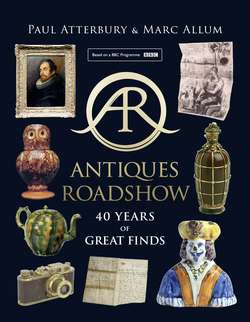Читать книгу Antiques Roadshow: 40 Years of Great Finds - Paul Atterbury, Paul Atterbury - Страница 17
A WILLIAM ORPEN PORTRAIT
Оглавление‘What started out as a copy became a major Orpen discovery, and revealed a First World War mystery – the Roadshow at its best.’
Rupert Maas
In 2009 the Roadshow returned to Greenwich, a classic Thames-side setting framed by glorious architecture. The sun shone and people turned out in their thousands. It was a typically diverse day, with several items inevitably linked to the river and its history.
A gentleman brought in a striking portrait of a beautiful girl, which he believed to be a copy of a painting by William Orpen. At first sight, expert Rupert Maas agreed with him, but then began to have doubts. Before too long, Rupert realised that he wasn’t looking at a copy, but probably at an original painting by Orpen. The situation was further confused by Orpen having signed the painting in a coded way.
THE WAR ARTIST
Sir William Orpen was the most successful British artist of the early twentieth century and the most famous portrait painter of his age. Extravagant, outgoing and a lover of the high life in all its forms, Orpen was also a great painter with a distinctive style that combined modernism with a healthy respect for Vermeer, Velásquez and other European masters. During the First World War, he was appointed an official war artist, given the honorary rank of major and sent to France in the spring of 1917. He began with portraits – of Sir Douglas Haig and others – and then widened his brief to include battlefield scenes creating, in the process, some of the greatest works produced by the war artists’ scheme.
The owner knew little about the painting but liked it very much and, encouraged by Rupert, he warmed to the idea that it might actually be by Orpen. However, with the limited research facilities available to him at the Roadshow, Rupert was not able to confirm the Orpen attribution, so he valued it for £20,000 to £30,000, pending further research. In due course, Rupert established that the portrait was indeed by Orpen and also that it was a second, hitherto unknown, version of a famous painting in the Imperial War Museum. At that point he revalued it for £250,000.
In the winter of 1917, William Orpen met and fell in love with a young Belgian girl named Yvonne Aubicq, who was to occupy a major place in his life, and his heart, until 1928. He immediately painted her in the direct and provocative manner for which he was famous, planning to show this portrait of Yvonne in an exhibition to be held at Agnew’s in London, early in 1918. He then remembered that, as an employed official war artist, he was only allowed to paint war pictures or those with war themes. In addition, the contract issued to official war artists stated that all paintings completed while ‘on duty’ were to be offered to the government, which had first refusal, and had to be submitted for censorship. As a result, no private work could be undertaken. To overcome this difficulty, he titled the painting The Refugee. He then went even further down a dangerous route by renaming it The Spy, and inventing and widely distributing a story about a glamorous German spy named Frida Nater, captured and shot by the French, whom he had been able to paint shortly before her execution.
After the filming the second version of Yvonne's portrait was briefly reunited with the Imperial War Museum's famous original, on the left.
A GLAMOROUS STORY
According to Orpen’s story, Frida was granted a last wish – to wear clothes of her choice for her execution. She chose a magnificent fur coat and, when the order was given, she dropped the coat and faced the firing squad completely naked, perhaps in the hope that the soldiers would not be able to carry out their orders. Nevertheless, she was shot. Inevitably, the truth came out, and Orpen ended up in trouble with the War Office. However, he recovered from this setback and continued to work as a war artist, not only throughout the duration of the war but also at the Paris Peace Conference in 1919. Now called The Refugee once more, this portrait of Yvonne is among over 130 works by Sir William Orpen in the collections of the Imperial War Museum.
Once all this had been established, the owner decided to sell the painting. At first, it was going to be sold at auction, and then it was sold privately, and is now in a private collection in Australia. The price paid was in the area of Rupert’s revised valuation.
